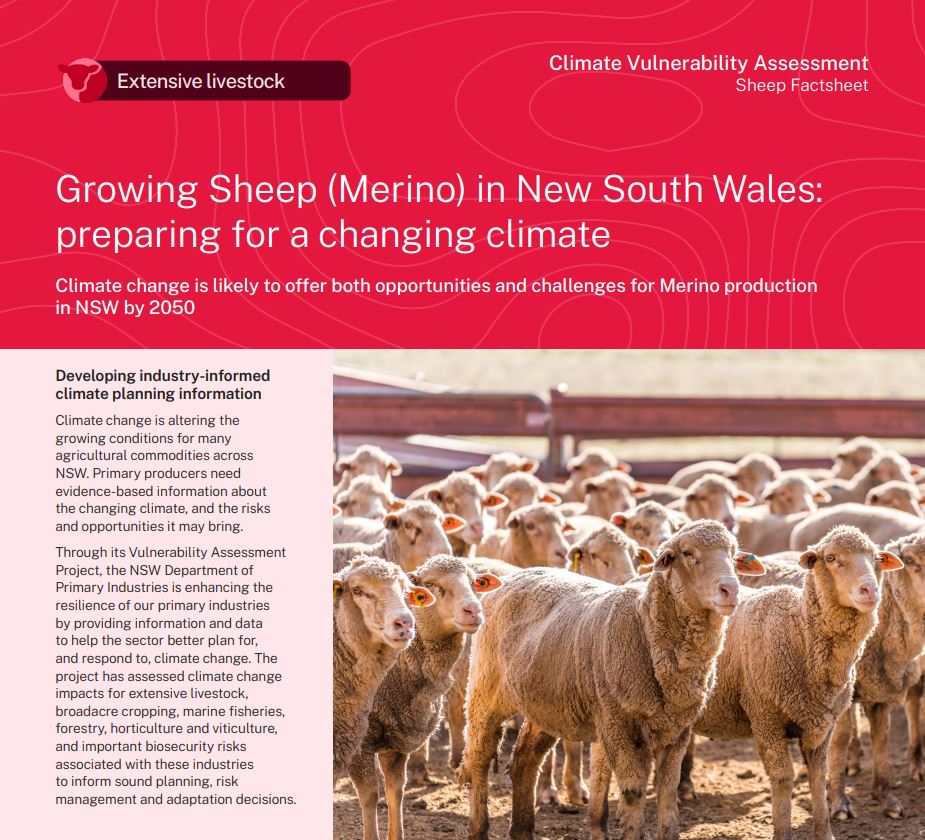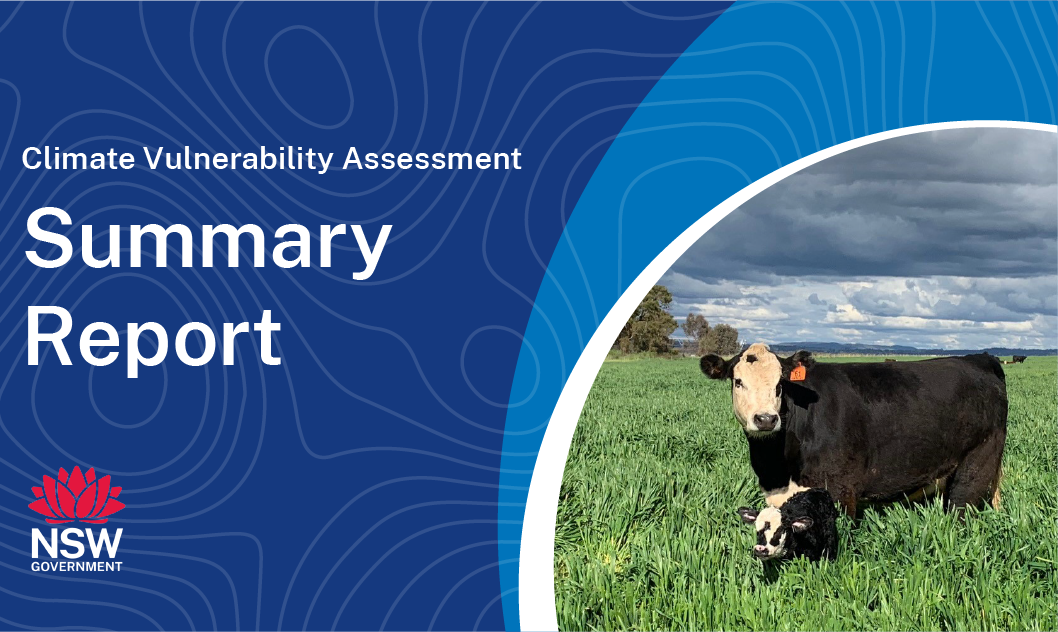What is the NSW DPIRD Climate Vulnerability Assessment? ⏷
Climate change is altering the growing conditions for many agricultural commodities across NSW. Primary producers need evidence-based information about the changing climate, and the risks and opportunities it may bring.
The NSW DPIRD Climate Vulnerability Assessments are enhancing the resilience of our primary industries by providing information and data to help the sector better plan for, and respond to, climate change. They have assessed climate change impacts for extensive livestock, broadacre and irrigated cropping, marine fisheries, forestry, horticulture and viticulture, and important biosecurity risks associated with these industries to inform sound planning, risk management and adaptation decisions.
How we assessed climate suitability ⏷
Climate projections were sourced from Climate Change in Australia’s ‘Application Ready Data’. This dataset is comprised of projections from an ensemble of 8 global climate models, each presenting a plausible future climate. The models differ in their projections, giving rise to uncertainty which is reflected in the confidence statements given in brackets. Care should be taken when interpreting these results.
The Climate Vulnerability Assessment is intended to highlight potential industry- or regional-level changes. Intermediate and high emissions scenarios were used in the assessments (RCP4.5 and RCP8.5), but these are not the only future scenarios possible. The inclusion of climate variables important to the commodities production was based on published research, expert knowledge and data quality and availability.
Learn more in the Climate Vulnerability Assessment Project Framework.
Climate impacts: what to expect
NSW sheep regions are expected to maintain high to very high suitability across the entire state under both emissions scenarios.
Sheep vulnerabilities
- Spring lambing: There is likely to be a minimal to moderate decrease in climate suitability across northern and central NSW due to the increase in days greater than 35°C during pre-joining (moderate to high confidence). This may impact Merino reproduction efficiency in the future. In a high emissions scenario, this minimal decrease extends across most of the state west of the Great Dividing Range (moderate to high confidence).
- Winter lambing: There is likely to be a minimal to moderate decrease in climate suitability across northern and western NSW due to the increase in days greater than 35°C during pre-joining (moderate to high confidence). This may impact Merino reproduction efficiency in the future. There is also likely to be a minimal decrease in suitability in central and northern NSW due to an increase in the number of days which have a minimum temperature greater than 25°C (moderate to high confidence).
Sheep opportunities
- There is likely to be a reduction in the chill index (see call-out box, page 70) during the lambing period for the spring lambing production system in the Armidale region (high confidence). This may increase the number of lambs surviving the neonatal period to weaning.
- Merino climate suitability in survivability and feed intake will remain similar to what has been historically experienced (moderate to high confidence).
Adapting to the changing climate
Adapting to extreme heat
- To prepare for future increases in temperature, industry could invest in thermal tolerance research.
- Management changes, such as moving the joining time to a cooler period, could also help with tolerating warmer temperatures.
Where can I find the climate suitability maps?
Maps of historical and future climate suitability for commodities were produced to demonstrate where in the state a commodity is likely to thrive or else be limited by future climatic conditions. The maps are not provided on these webpages but can be found in the Climate Vulnerability Assessment Summary Report (PDF, 41425.92 KB).
Sheep Factsheet
(PDF, 2904.11 KB)

Summary Report
(PDF, 41425.92 KB)

 Sheep in NSW
Sheep in NSW